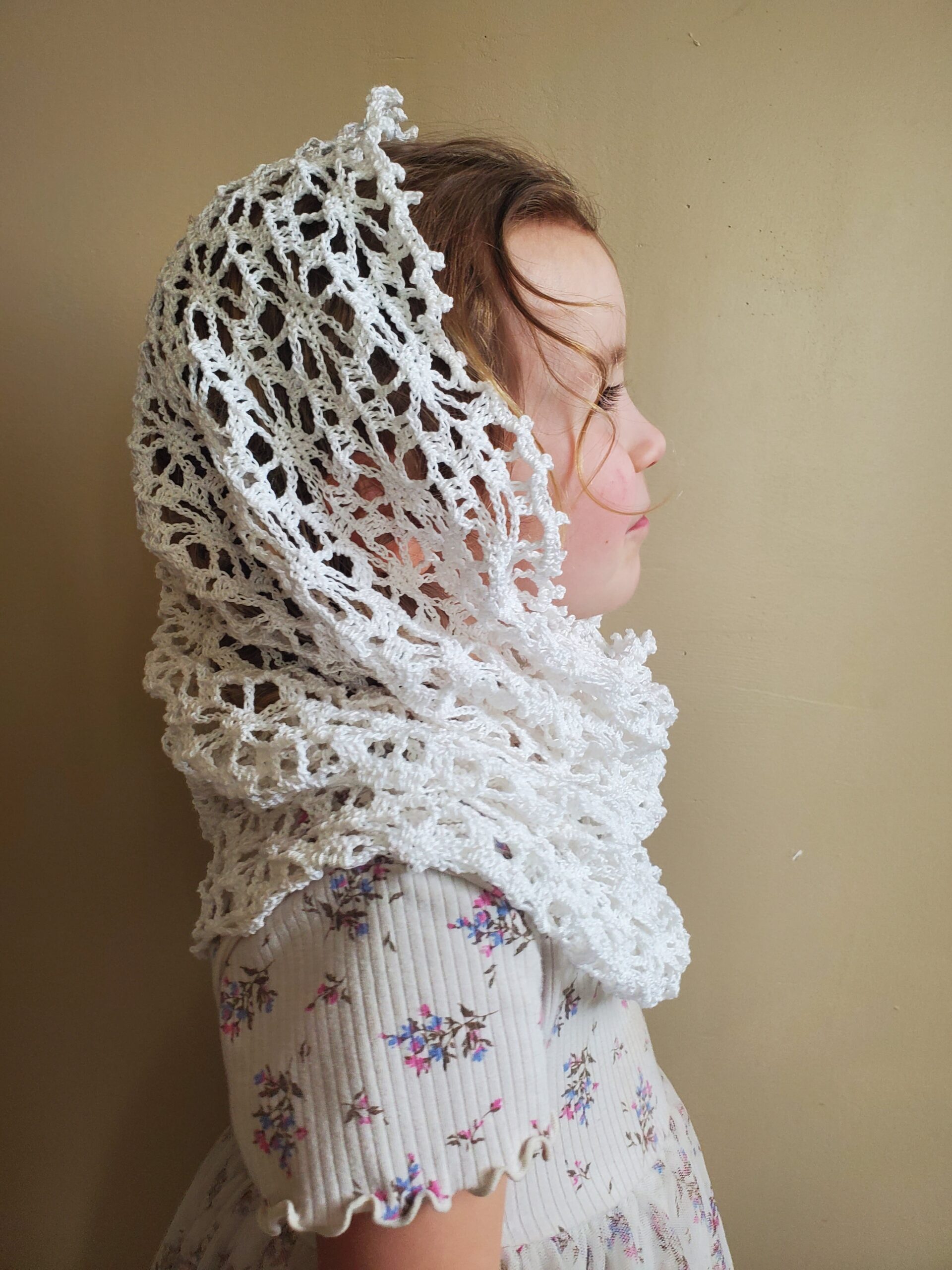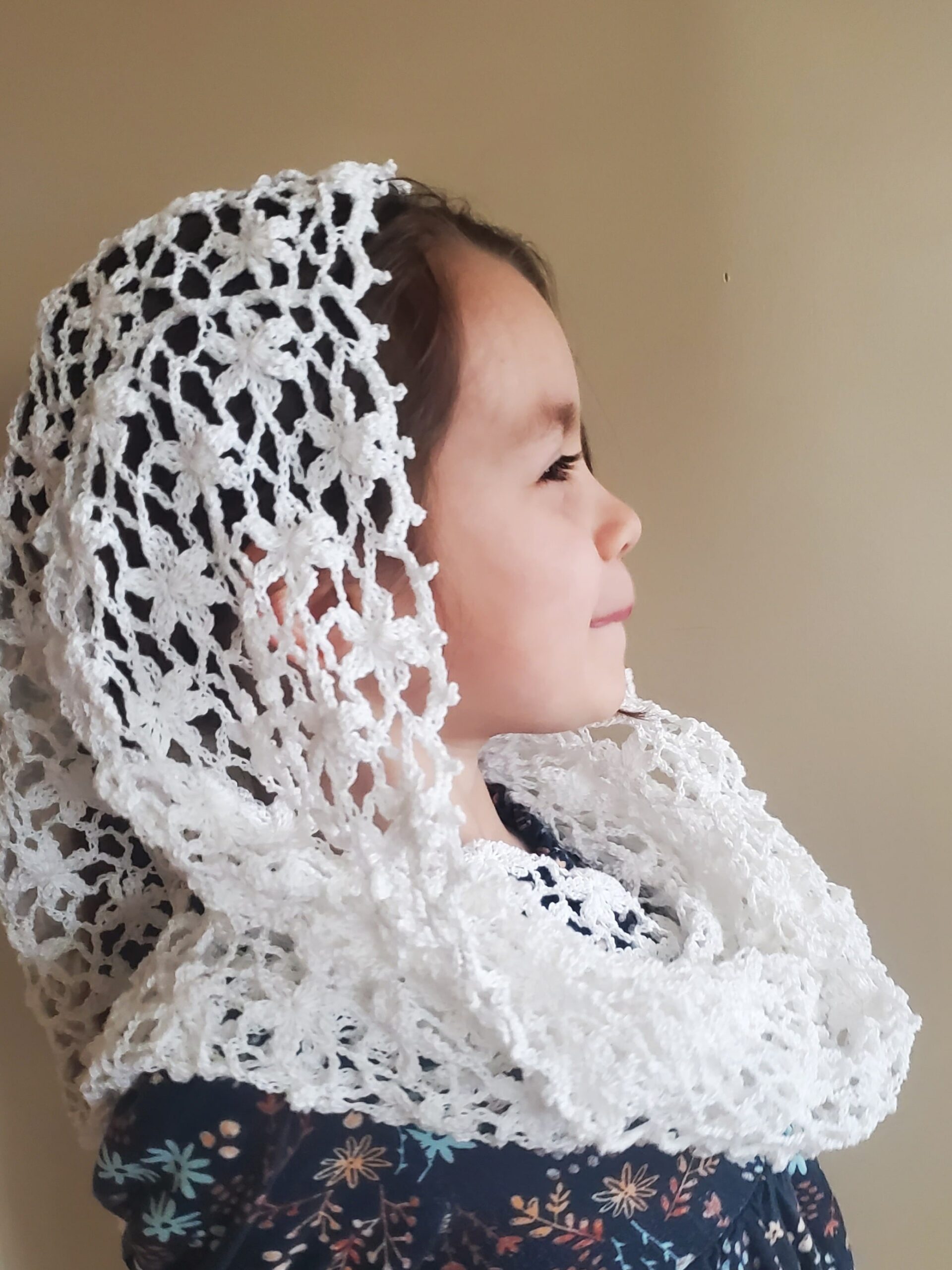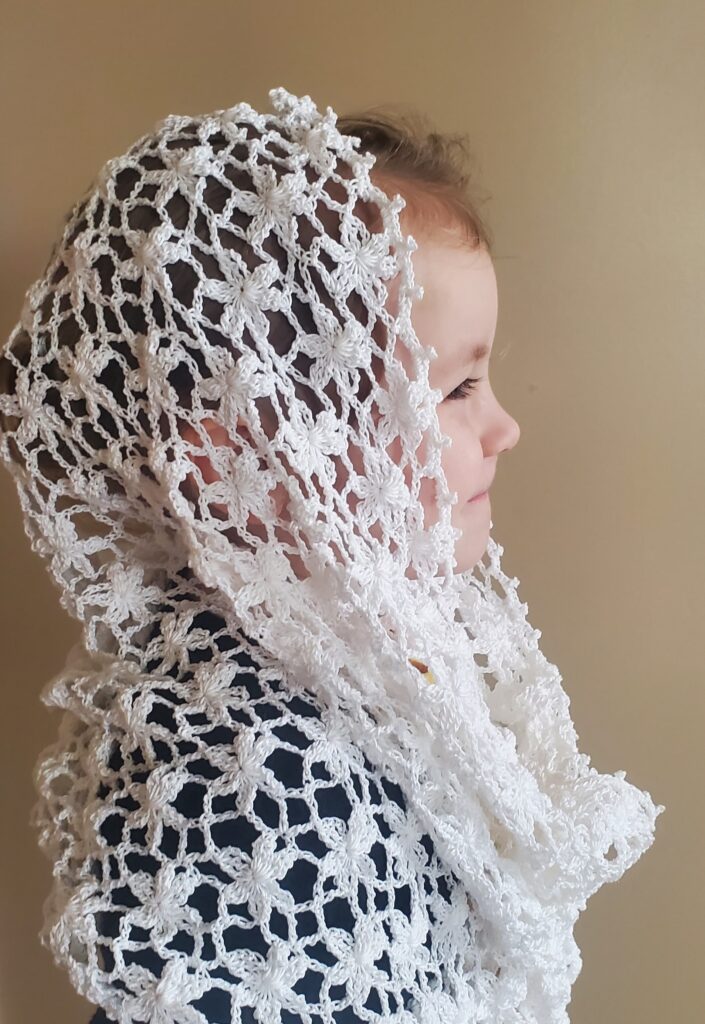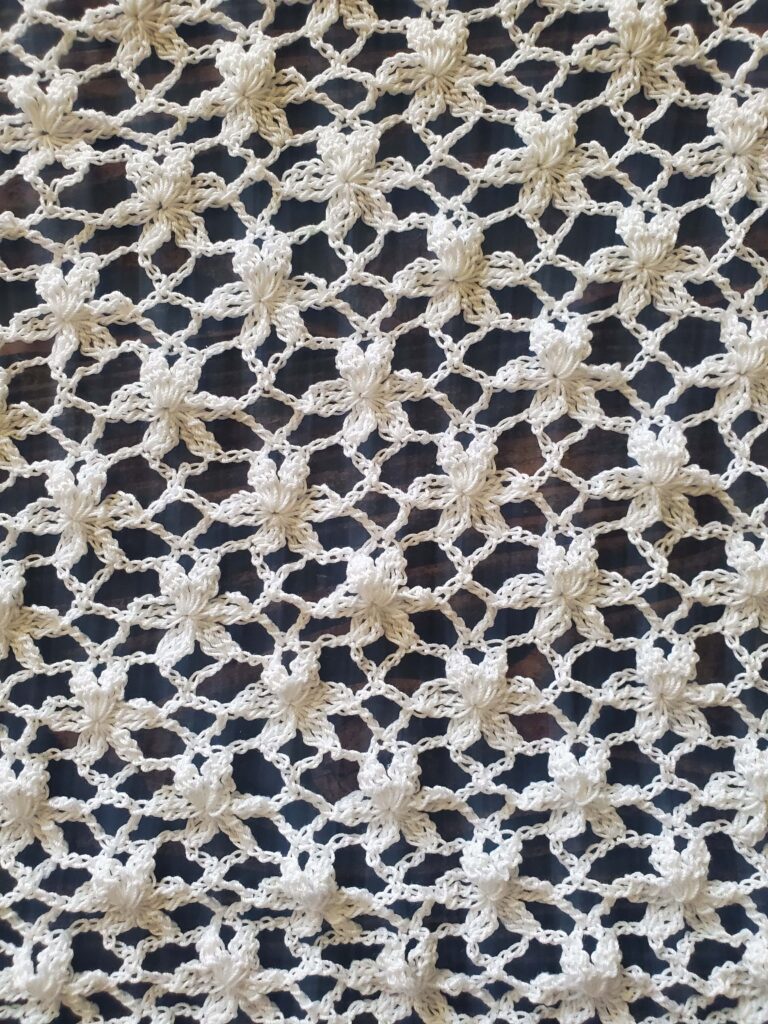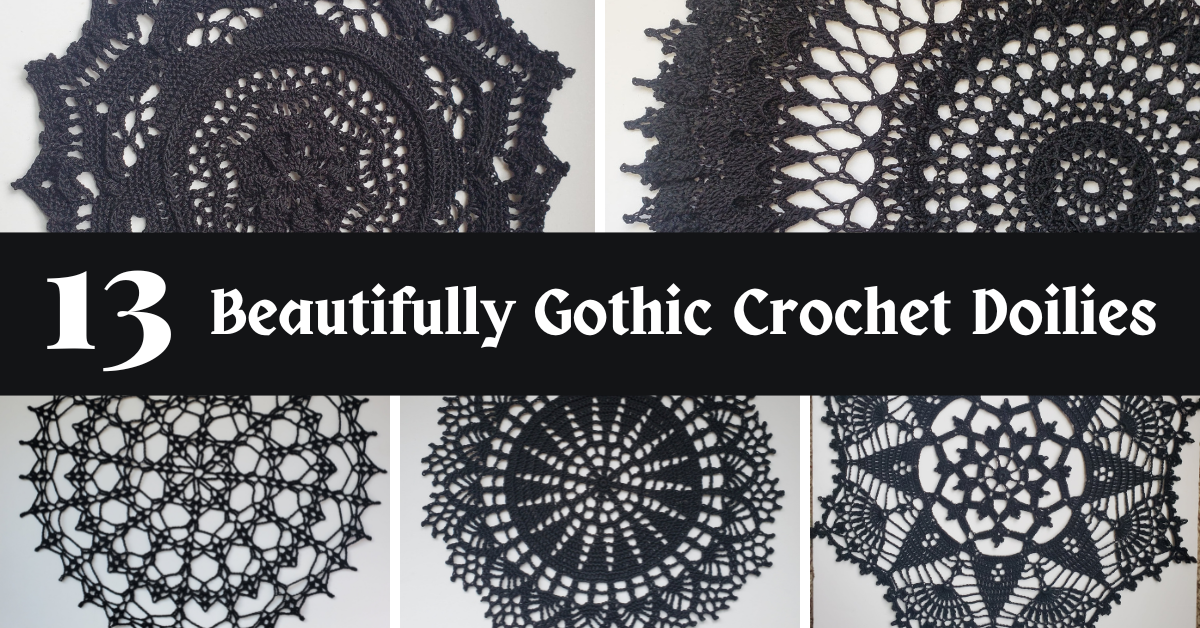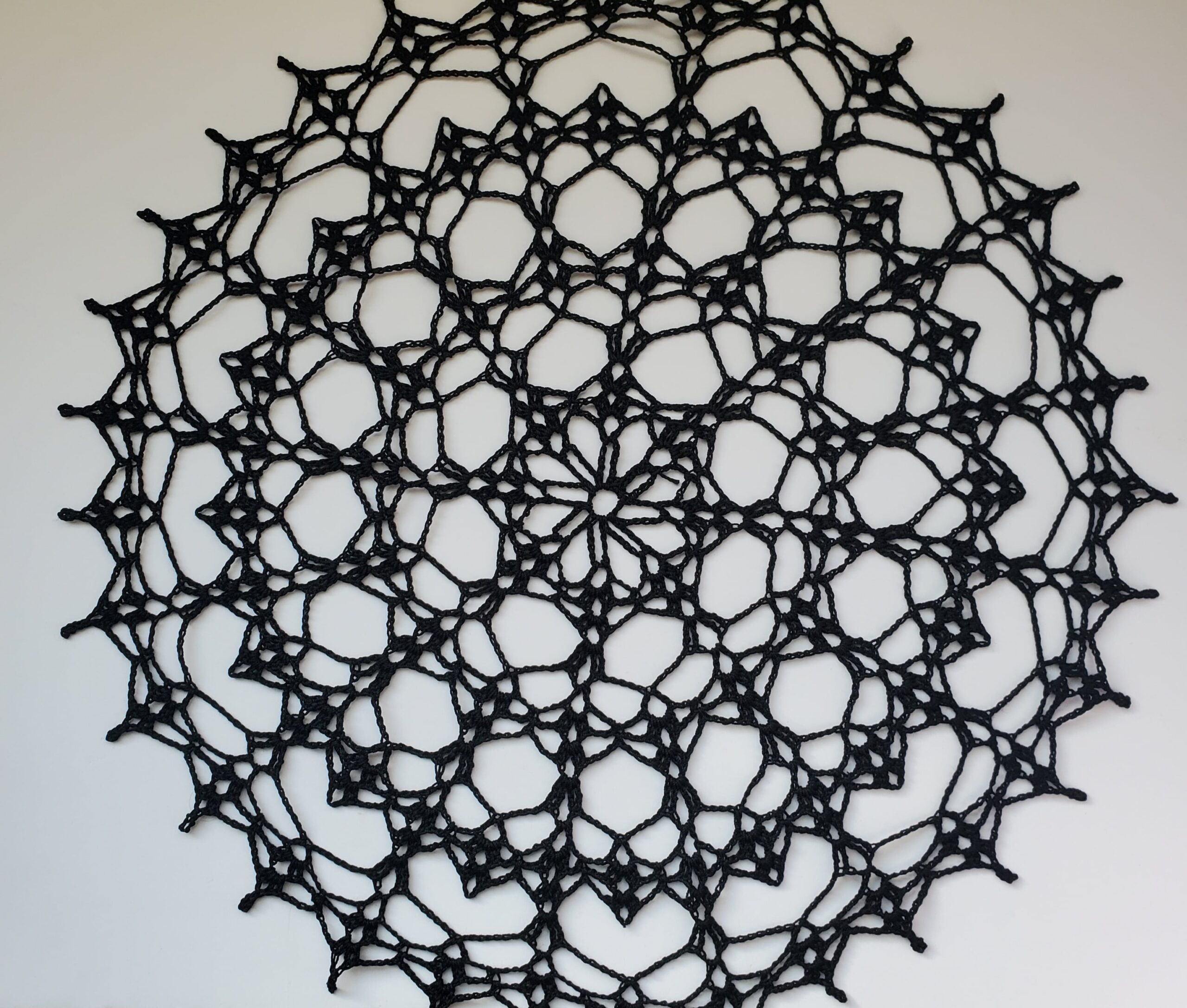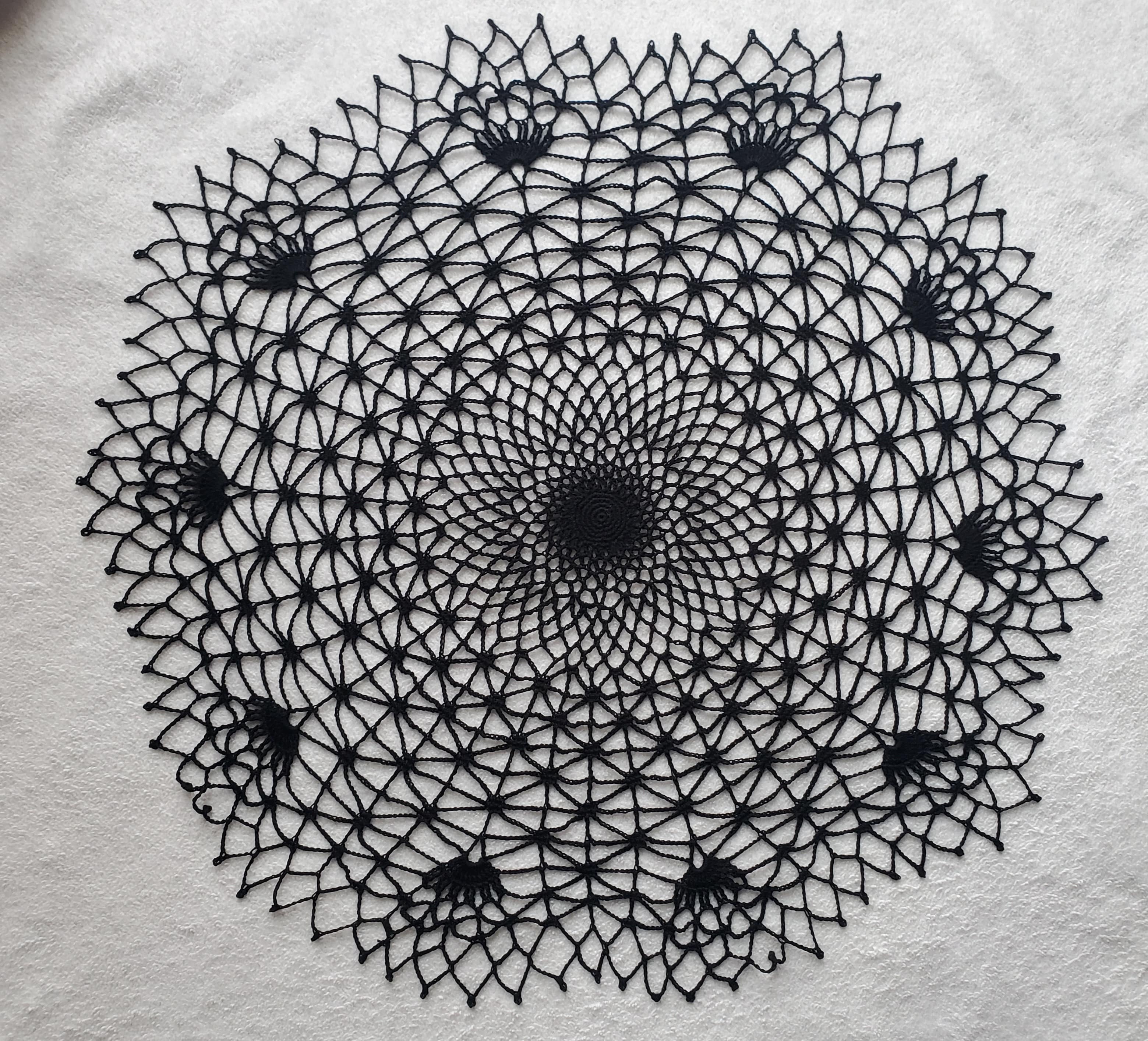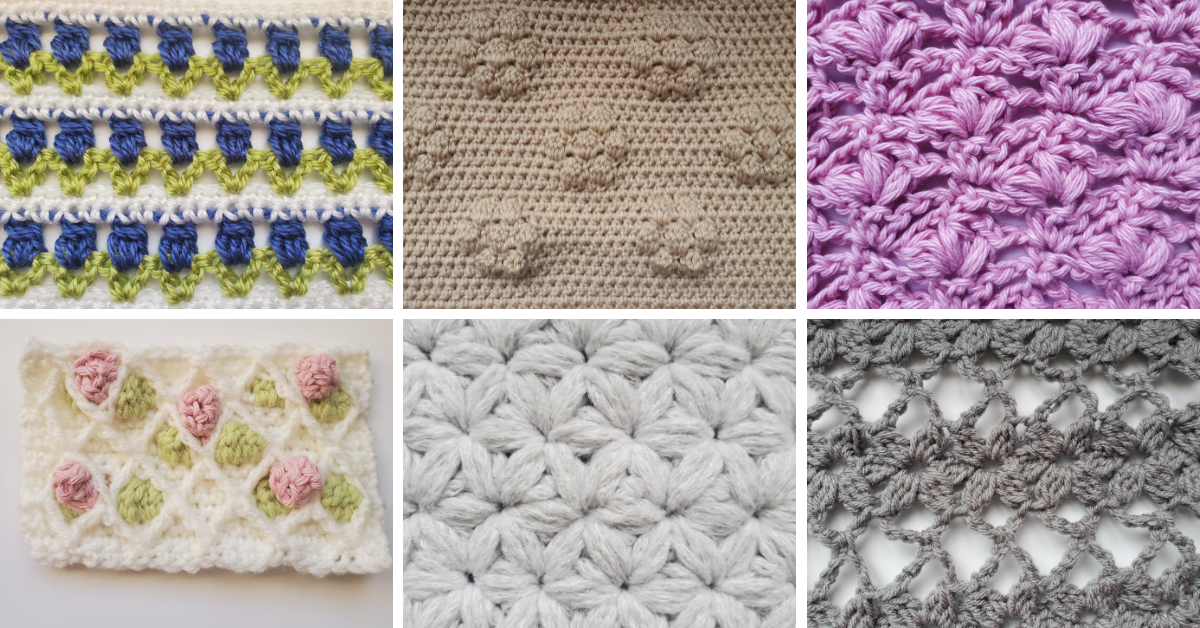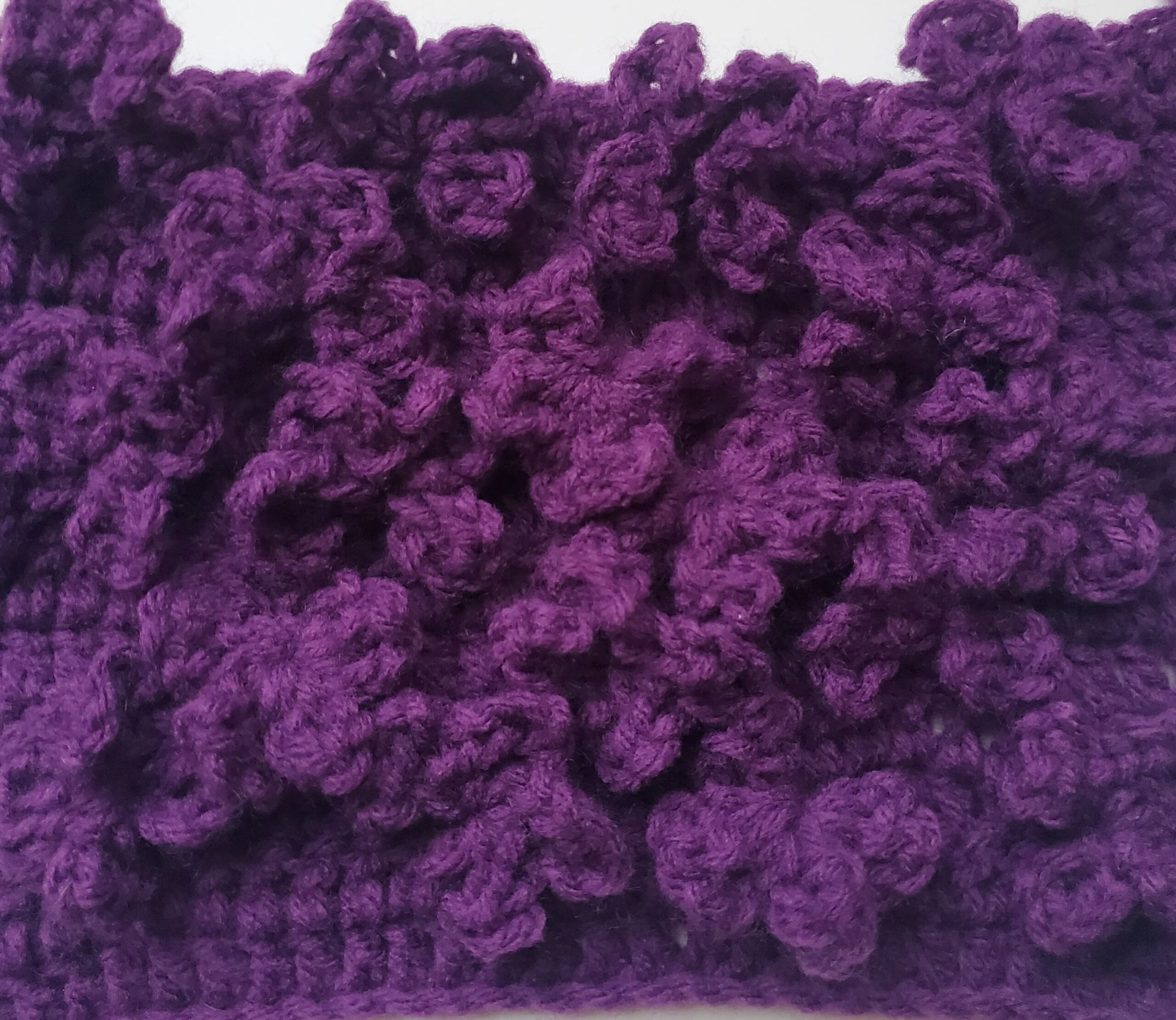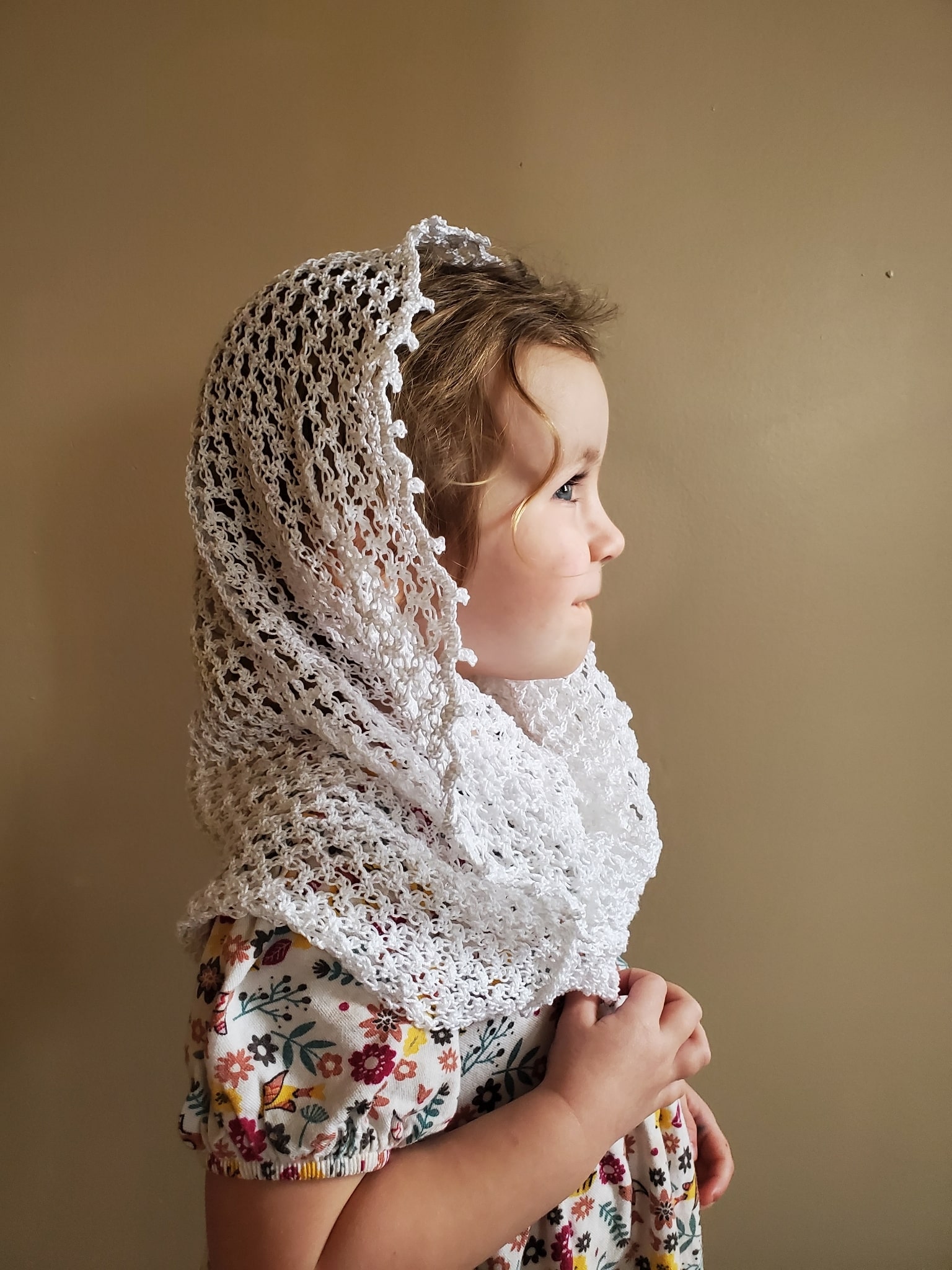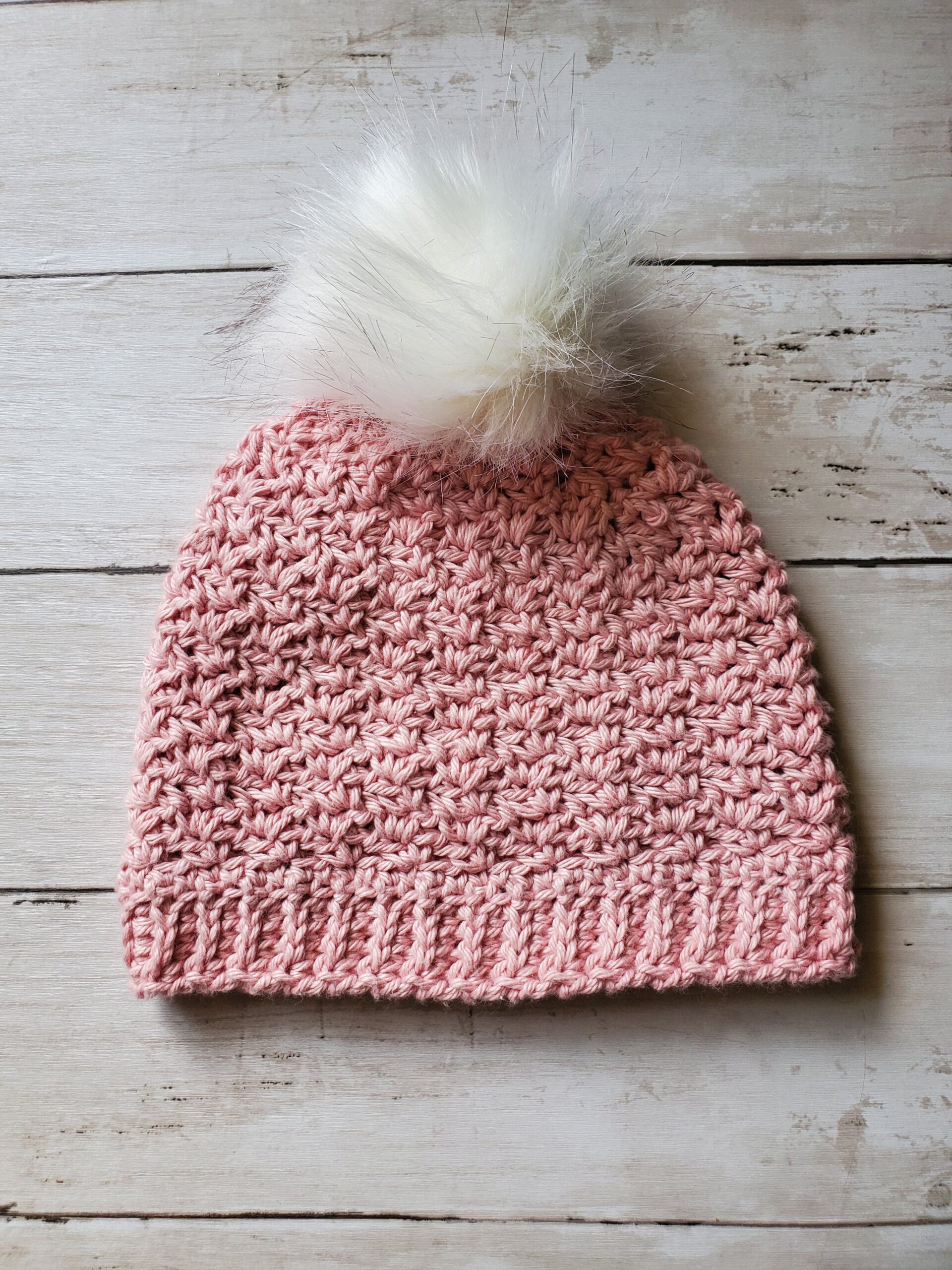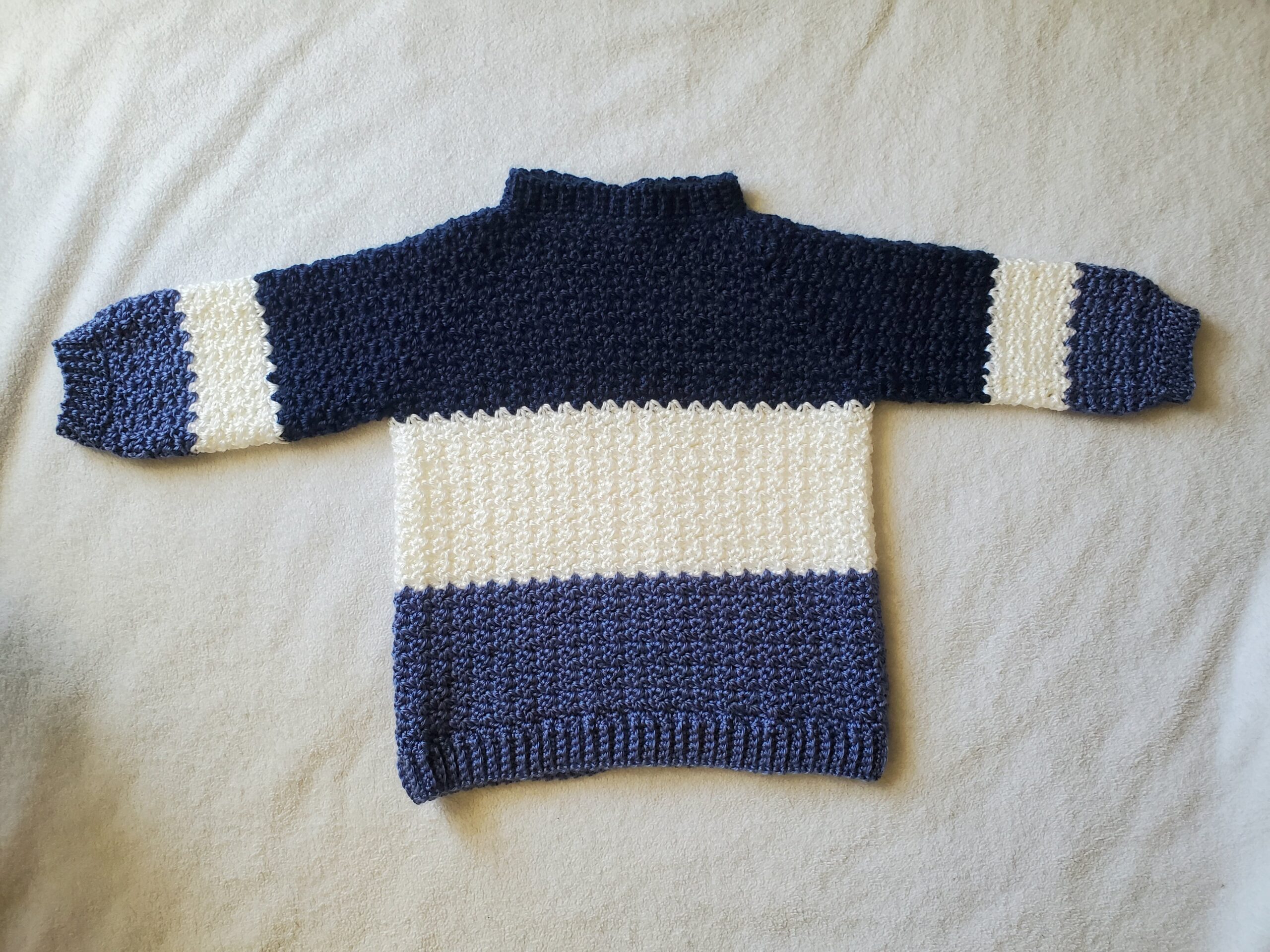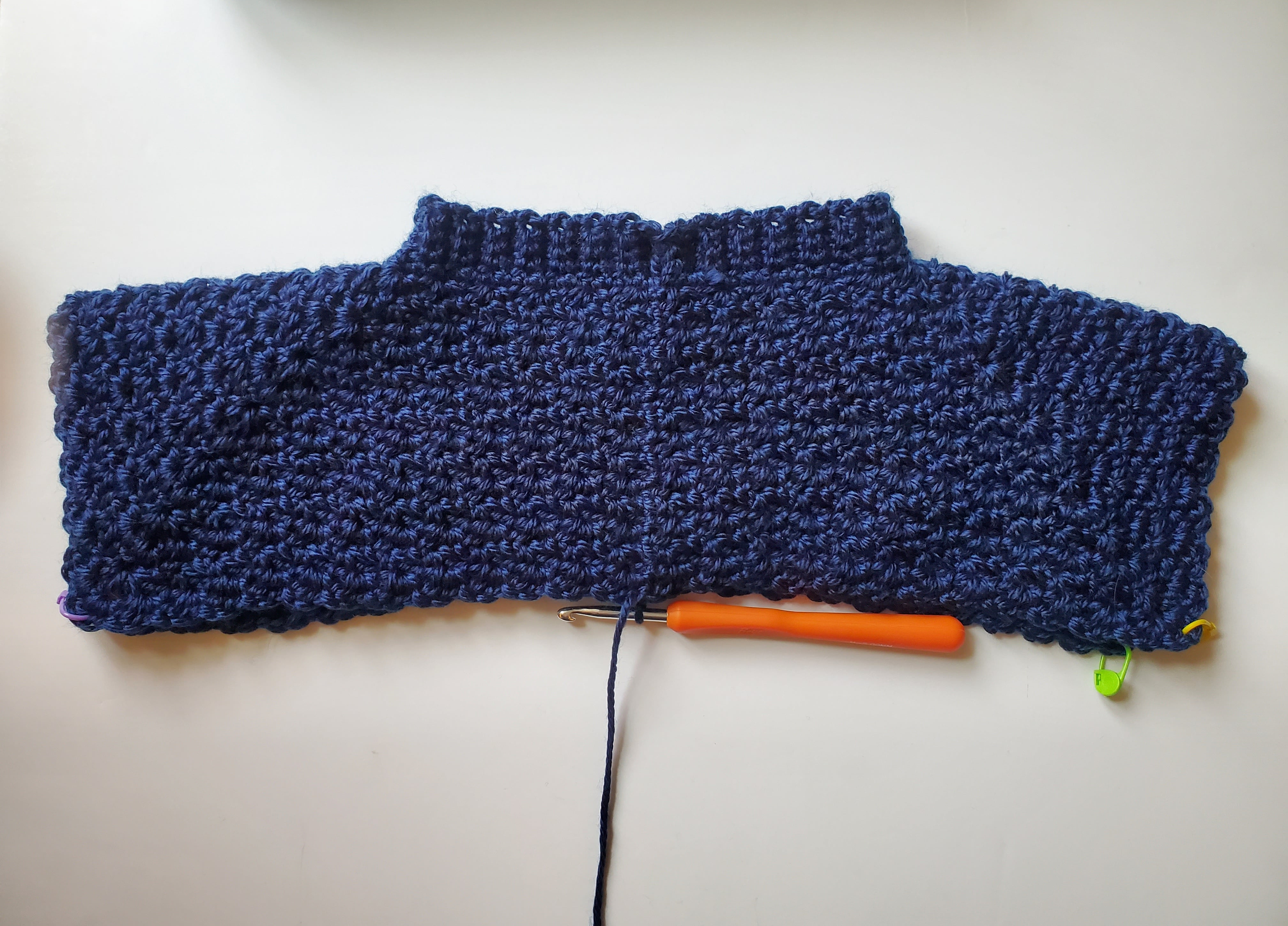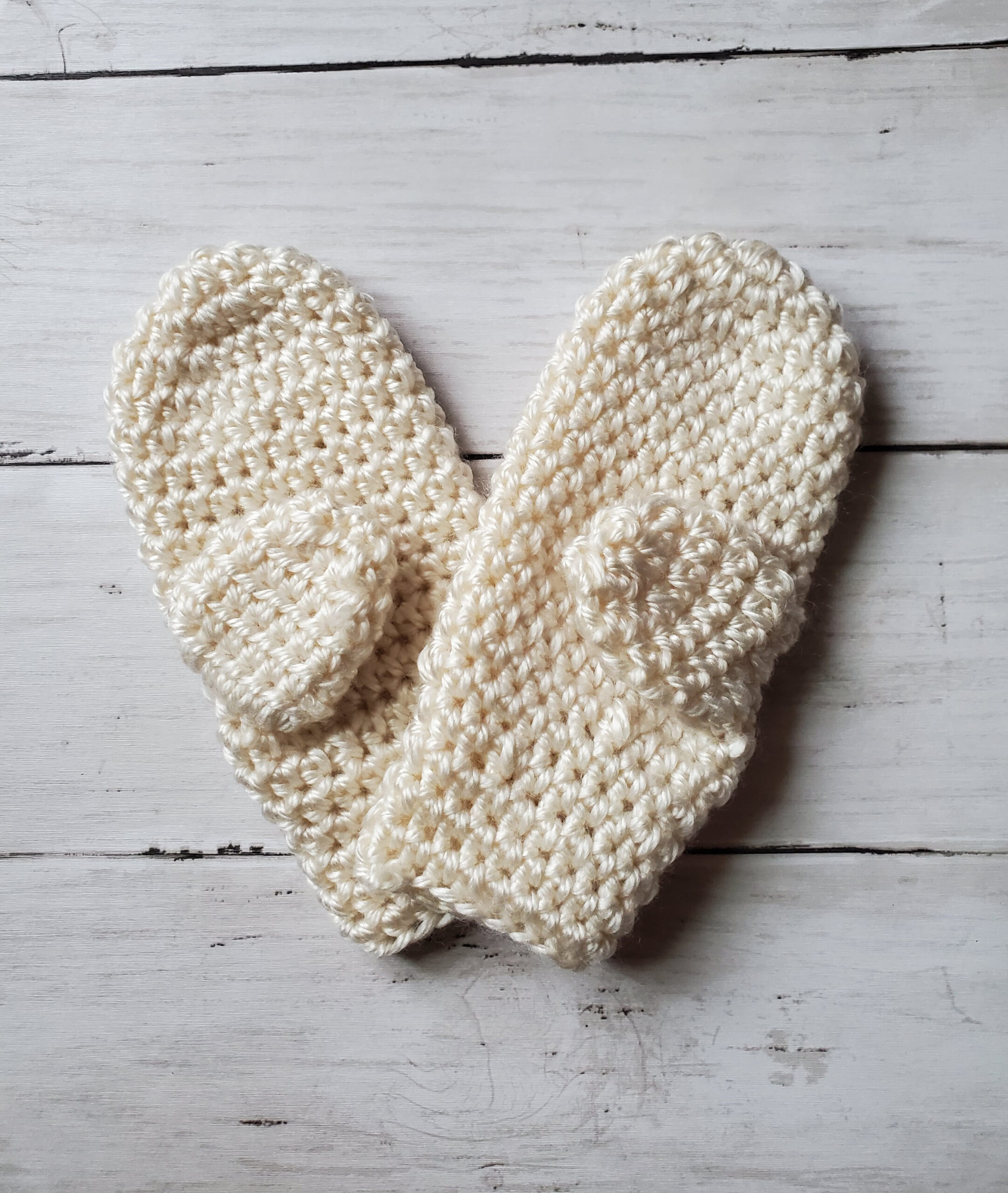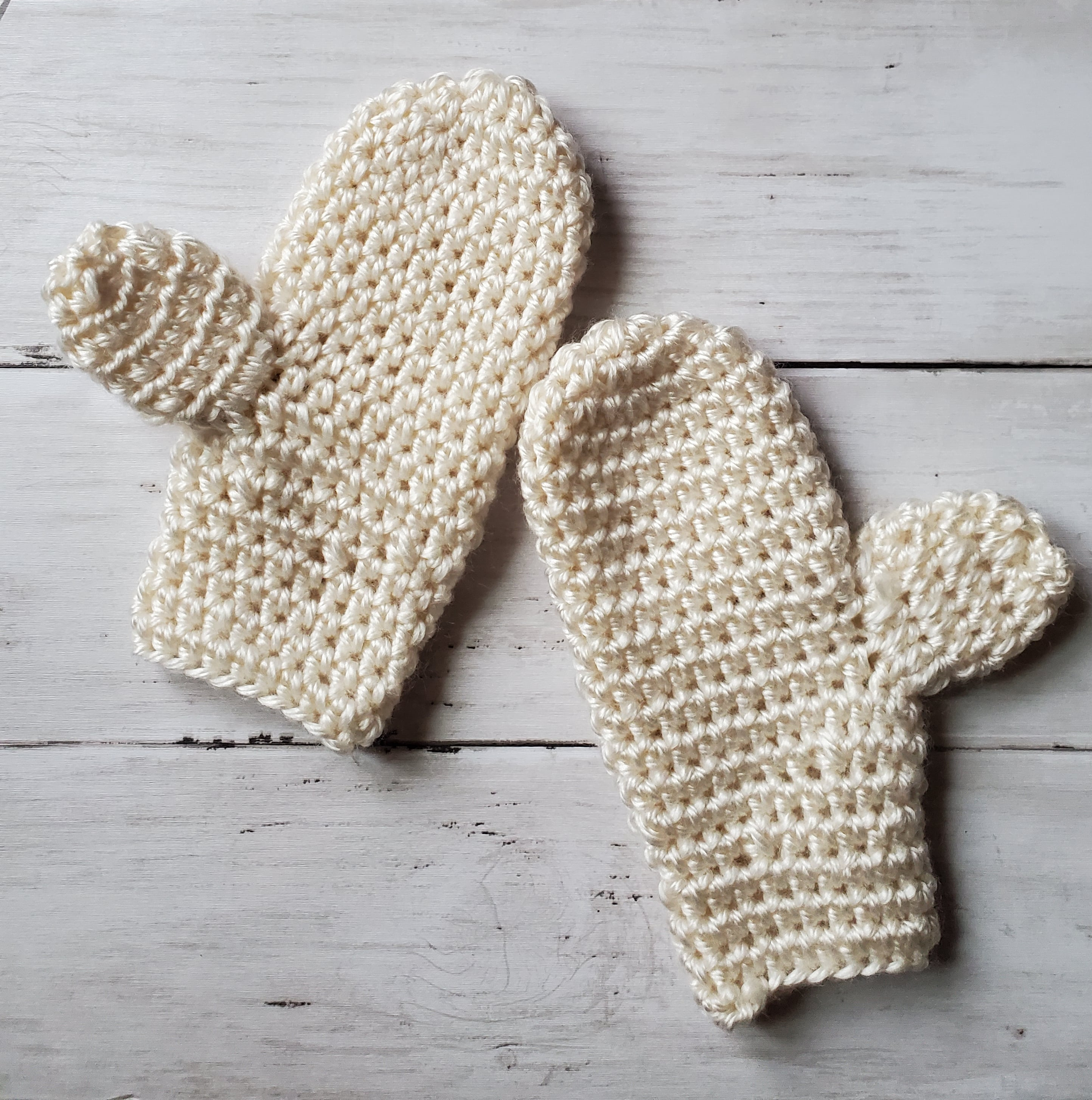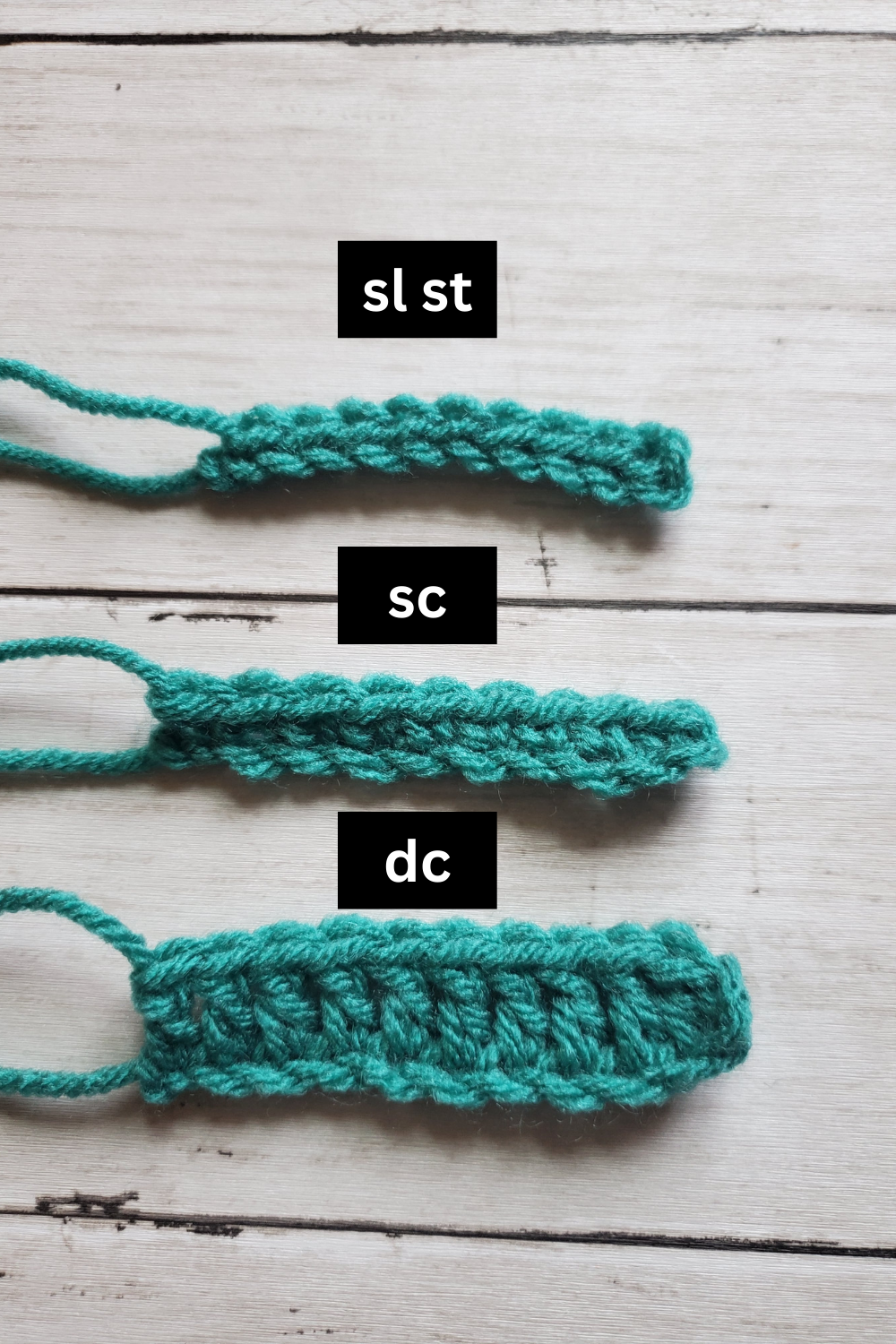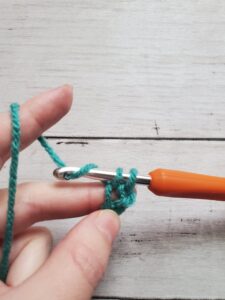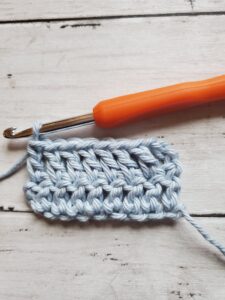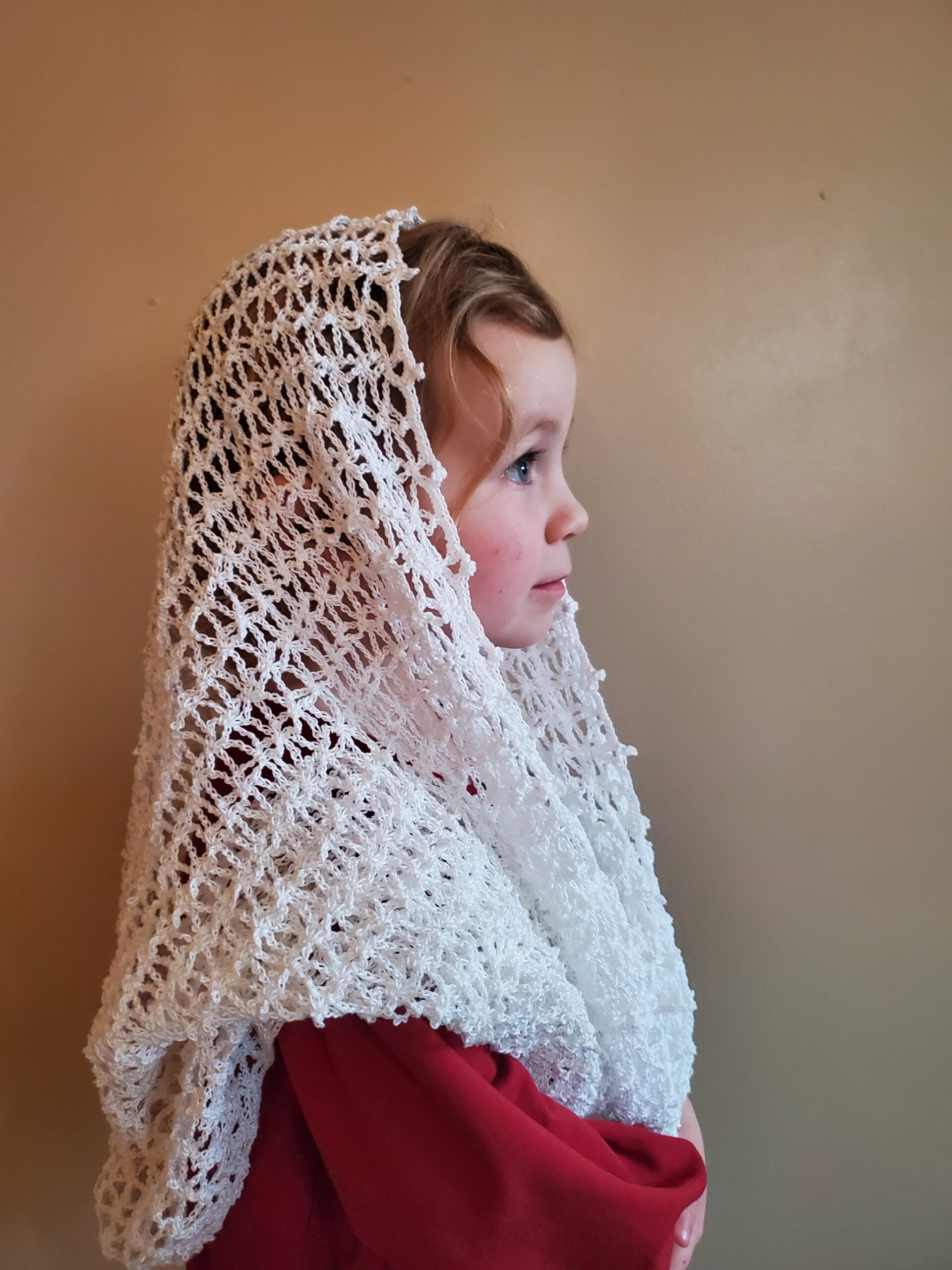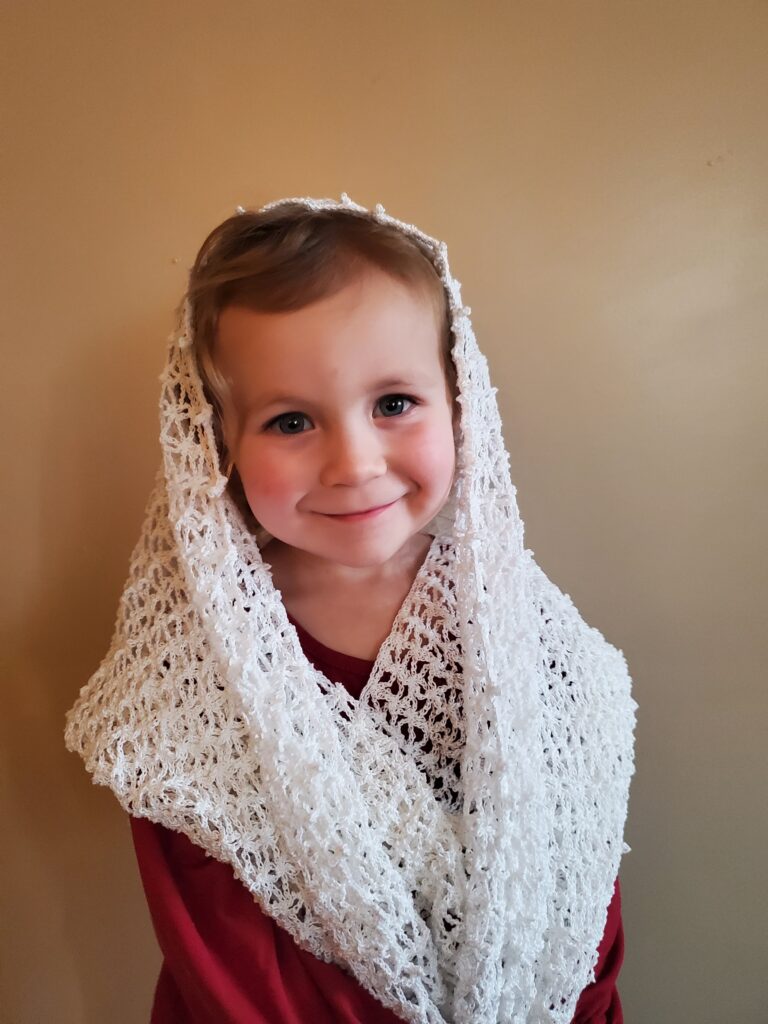Flower Diamond Crochet Veil Pattern
Hello everyone, today I have another free crochet veil pattern for you all…the Crochet Flower Diamond Veil! This crochet veil has a 10 petaled flower worked in a diamond shape and sewn into the infinity style. I hope you like it!
This veil pattern is created for use at Catholic mass, or at least, that’s what I use it for! Some women wear a veil during mass as an outward way to humble themselves before God. According to Fr. Anthony Dorsa from Catholic Answers, “…women are to be veiled in the presence of that which is holy, because they themselves are, in a sense, sacred.”
As with some of my previous crochet veil patterns, this is a project that will take a little bit of time to complete. Using the tiny crochet thread makes the veil look dainty, and because of that, it’s a labor of love. I believe this veil took me about 3 weeks to finish. Of those 3 weeks, I worked on it for about 1-2 hours a day, your time may vary of course.
The Flower Diamond Crochet Veil is worked up in 10 rows and then repeated from rows 3-10 until you’ve reached your desired length.
The veil can be adjusted in length, the repeat formula is 36+4. This means to make a series of 36 chains until you’re happy with the length and then add 4 more chains for the turning chain.
I suggest making your starting chain and then draping it over your head, while bringing the ends together to get an idea of what size you need. I like to give my veils enough room around my neck and chest area, otherwise I feel constricted.
Okay, let’s get into this beautiful crochet veil pattern!
Related Posts:
Please note that some of these links are affiliate links. That means that if you click on these links and make a purchase, I may receive a commission at no extra cost to you. You can find more information about our disclosure policy here. Thank you for your support.
Materials Needed:
- Red Heart Classic Crochet Thread in White, 100 Yards, Size 10 x 1
- 1.65mm Crochet Hook
- Scissors
- Tapestry Needle
Abbreviations Used:
Please note these are in US terms, not UK.
- Ch(s) – chain(s)
- Sc – single crochet
- Dc – double crochet
- Tr – treble crochet
- Ch 3 picot – ch 3, insert hook into top of last stitch, make a slip stitch
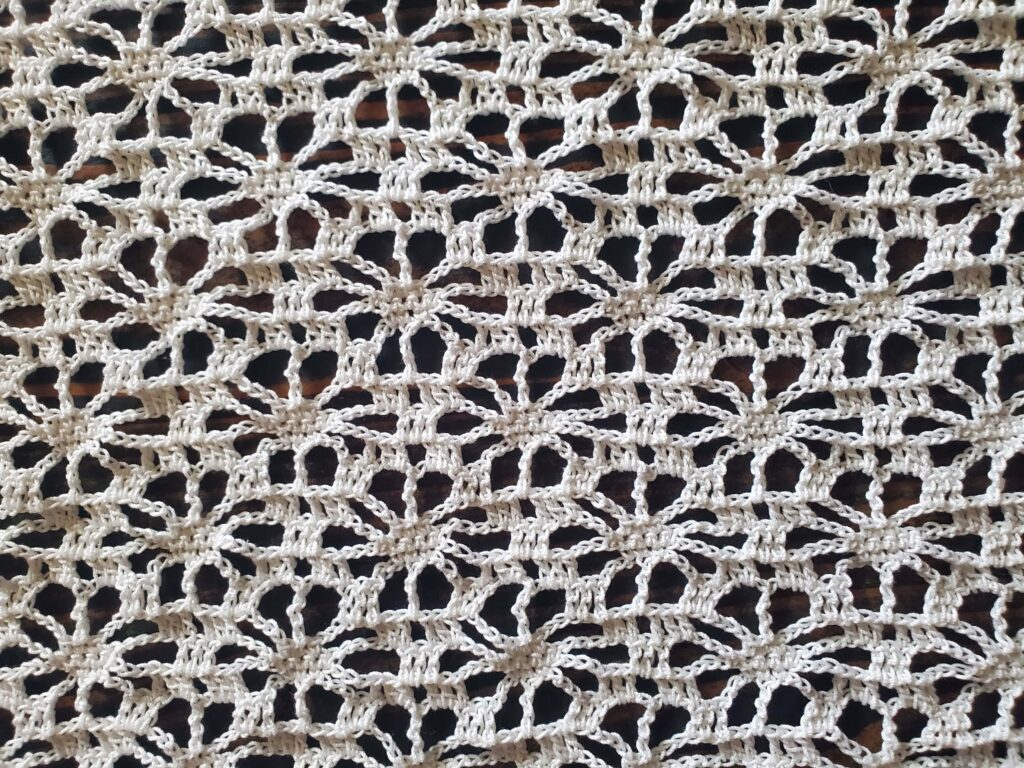
Flower Diamond Crochet Veil Pattern
Ch a repeat of 36+4 until desired length.
- Row 1: Dc in 5th ch from hook, ch 5, skip 5 chs, 1 sc in next 5 chs, *ch 5, skip 5 chs, 1 dc in next 3 chs, ch 5, skip 5 chs, 1 sc in next 5 chs.* Repeat from *to* until 7 chs are left. Ch 5, skip 5 chs, 1 dc in last 2 chs.
- Row 2: Ch 3, turn, skip first dc, *dc in next dc, 1 dc in 1st and 2nd chs of next ch 5, ch 5, skip next sc, 1 sc in next 3 sc, ch 5, skip 3 chs of next ch 5, 1 dc in 4th and 5th chs, dc in next dc, ch 1, skip next dc.* Repeat from *to* until last repeat completed. Dc in next dc, 1 dc in 1st and 2nd chs of next ch 5, ch 5, skip next sc, 1 sc in next 3 sc, ch 5, 1 dc in 4th and 5th chs of next ch 5, 1 dc in next dc, 1 dc in top of turning ch from previous row.
- Row 3: Ch 8, turn, skip next 3 dc, *1 dc in next dc, 1 dc in 1st and 2nd chs of next ch 5, ch 3, skip next sc, tr in next sc, ch 3, skip 3 chs of next ch 5, 1 dc in 4th and 5th chs, 1 dc in next dc, ch 4, tr in next ch 1 space, ch 4, skip next 2 dc.* Repeat from *to* until last repeat completed. 1 dc in next dc, 1 dc in 1st and 2nd chs of next ch 5, ch 3, skip next sc, tr in next sc, ch 3, skip 3 chs of next ch 5, 1 dc in 4th and 5th chs, 1 dc in next dc, ch 4, tr in top of ch 3 turning ch from previous row.
- Row 4: Ch 1, turn, skip tr, sc in 1st ch of next ch 4, *ch 4, skip next 2 dc, 1 dc in next dc, 2 dc in next ch 3 space, ch 1, skip tr, 2 dc in next ch 3 space, 1 dc in next dc, ch 4, skip next 2 dc and 3 chs in next ch 4 space, sc in 4th ch, sc in tr, sc in 1st ch in next ch 4 space.* Repeat from *to* until last repeat completed. Ch 4, skip next 2 dc, 1 dc in next dc, 2 dc in next ch 3 space, ch 1, skip tr, 2 dc in next ch 3 space, 1 dc in next dc, ch 4, skip next 2 dc, skip 3 chs of previous rows turning ch, 1 sc in next 2 chs.
- Row 5: Ch 1, turn, skip 1st sc, sc in next sc, sc in 1st ch of next ch 4 space, *ch 5, skip next 2 dc, dc in next dc, dc in ch 1 space, dc in next dc, ch 5, skip next 2 dc, skip 3 chs of next ch 4 space, sc in next ch, 1 sc in next 3 sc, 1 sc in 1st ch of next ch 4 space.* Repeat from *to* until until last repeat completed. Ch 5, skip next 2 dc, dc in next dc, dc in ch 1 space, dc in next dc, ch 5, skip next 2 dc, skip next 3 chs of next ch 4 space, sc in next ch, sc in next sc, sc in ch 1 turning ch from previous row.
- Row 6: Ch 1, turn, skip 1st sc, sc in next sc, skip next sc, *ch 5, skip 3 chs of next ch 5 space, dc in 4th and 5th chs, dc in next dc, ch 1, skip dc, dc in next dc, dc in 1st and 2nd chs of next ch 5 space, ch 5, skip next sc, 1 sc in next 3 sc, skip next sc.* Repeat from *to* until last repeat completed, ch 5, skip 3 chs of next ch 5 space, dc in 4th and 5th chs, dc in next dc, ch 1, skip dc, dc in next dc, dc in 1st and 2nd chs of next ch 5 space, ch 5, skip next sc, sc in next sc, sc in ch 1 turning ch from previous row.
- Row 7: Ch 7, turn, skip next 2 sc and 3 chs of next ch 5 space, dc in 4th and 5th chs, *dc in next dc, ch 4, skip next 2 dc, tr in ch 1 space, ch 4, skip next 2 dc, dc in next dc, dc in 1st and 2nd chs of next ch 5 space, ch 3, skip next sc, tr in next sc, ch 3, skip next sc, skip 3 chs of next ch 5 space, dc in 4th and 5th chs.* Repeat from *to* until last repeat completed, dc in next dc, ch 4, skip next 2 dc, tr in ch 1 space, ch 4, skip next 2 dc, dc in next dc, dc in 1st and 2nd chs of next ch 5 space, ch 3, skip next sc, tr in ch 1 turning ch of previous row
- Row 8: Ch 3, turn, 2 dc in ch 3 space, dc in next dc, *ch 4, skip next 2 dc and 3 chs of next ch 4 space, sc in 4th ch, sc in tr, sc in 1st ch of next ch 4 space, ch 4, skip next 2 dc, dc in next dc, 2 dc in next ch 3 space, ch 1, skip tr, 2 dc in next ch 3 space, dc in next dc.* Repeat from *to* until last repeat completed, ch 4, skip next 2 dc and 3 chs of next ch 4 space, sc in 4th ch, sc in tr, sc in 1st ch of next ch 4 space, ch 4, skip next 2 dc, dc in next dc, 3 dc in ch 7 turning ch from previous row.
- Row 9: Ch 3, turn, skip 1st dc, dc in next dc, *ch 5, skip 3 chs of next ch 4 space, sc in 4th ch, sc in next 3 sc, sc in 1st ch of next ch 4 space, ch 5, skip next 2 dc, dc in next dc, dc in ch 1 space, dc in next dc, skip next 2 dc.* Repeat from *to* until last repeat completed, ch 5, skip 3 chs of next ch 4 space, sc in 4th ch, sc in next 3 sc, sc in 1st ch of next ch 4 space, ch 5, skip next 2 dc, dc in next dc, dc in top of ch 3 turning ch from previous row.
- Row 10: Ch 3, turn, skip 1st dc, *dc in next dc, dc in 1st and 2nd ch of next ch 5 space, ch 5, skip next sc, sc in next 3 sc, ch 5, skip next sc and 3 chs of next ch 5 space, dc in 4th and 5th chs, dc in next dc, ch 1, skip next dc.* Repeat from *to* until last repeat completed, dc in next dc, dc in 1st and 2nd ch of next ch 5 space, ch 5, skip next sc, sc in next 3 sc, ch 5, skip next sc and 3 chs of next ch 5 space, dc in 4th and 5th chs, dc in next dc, dc in top of ch 3 turning ch from previous row.
Repeat rows 3-10 until desired length. End after a row 3 repeat.
- Edging: Ch 1, turn, *sc in tr, 2 sc in next ch space, ch 3 picot, 2 sc in same ch space, sc in next 3 dc, 2 sc in next ch space, ch 3 picot, 2 sc in same ch space.* Repeat from *to* until end.
DO NOT CUT THREAD
- Assembly: Fold the veil in half, sew the edges together by slip stitching into both sides as evenly as possible. Cut thread, sew in ends with tapestry needle.
Thank you for trying out the Flower Diamond Crochet Veil pattern. I try my best to make pattern instructions as clear as possible, but if you have questions or notice a mistake, please let me know in the comments below.
Until next time!

